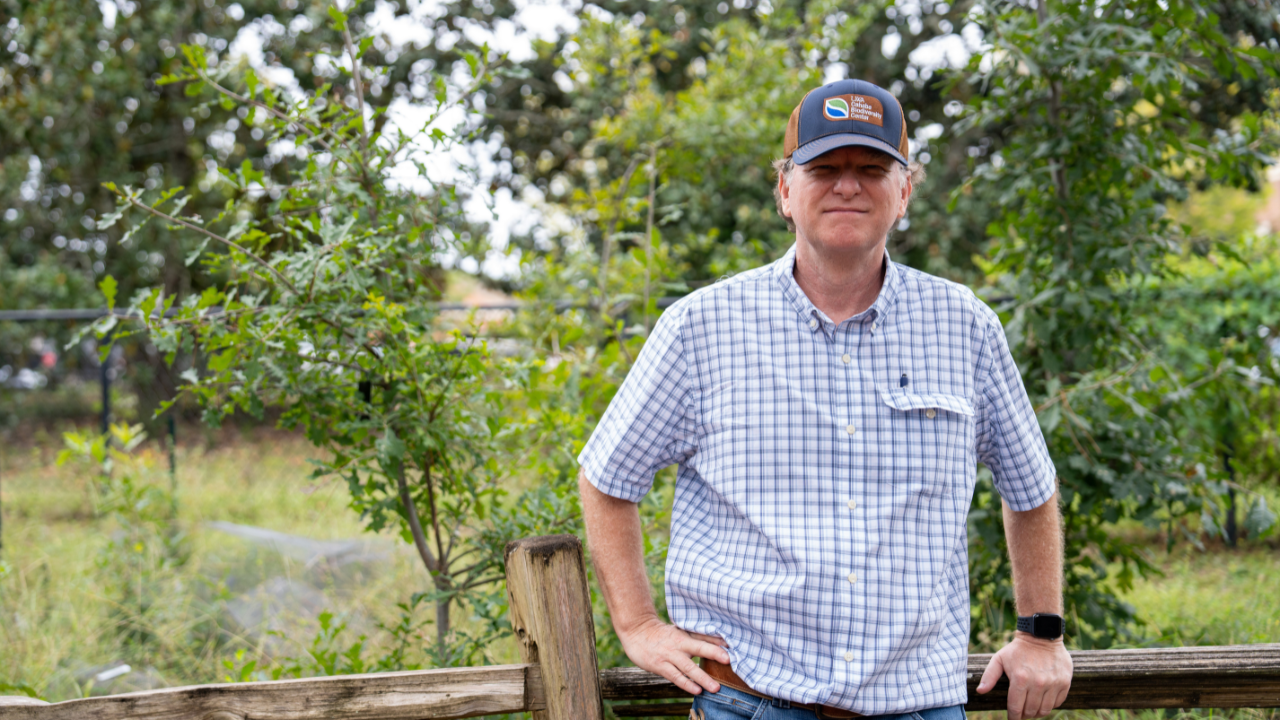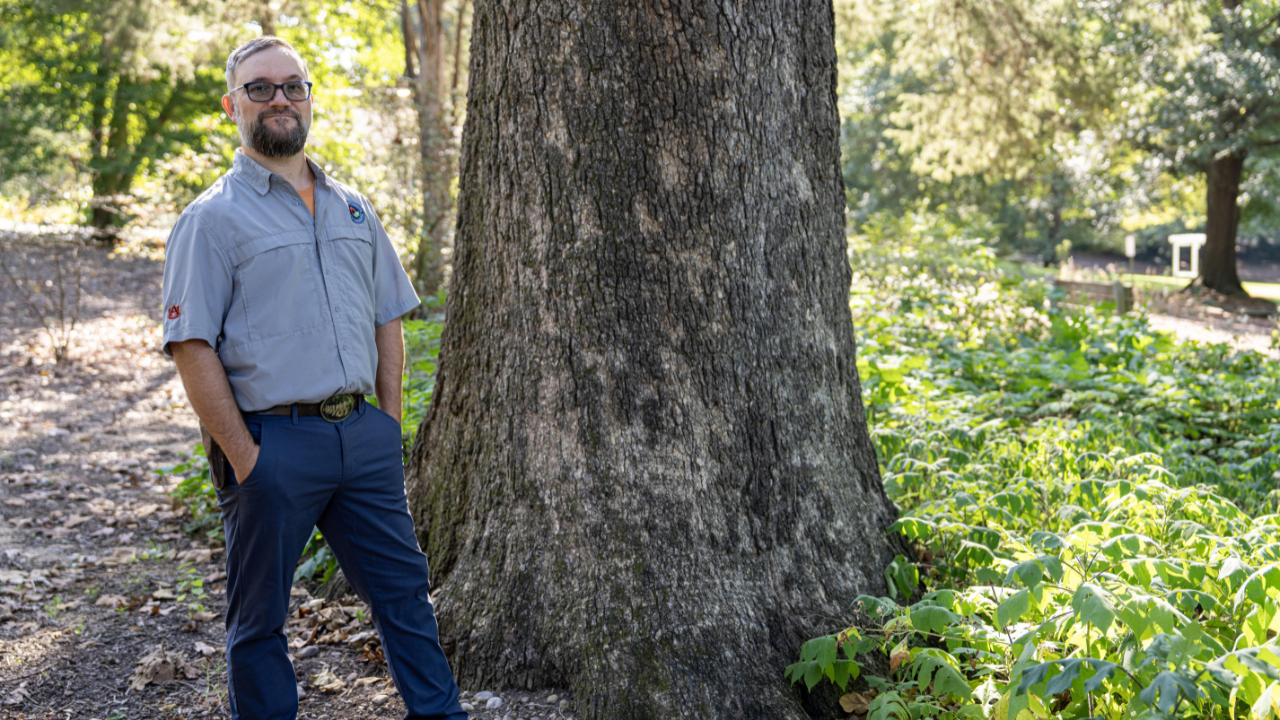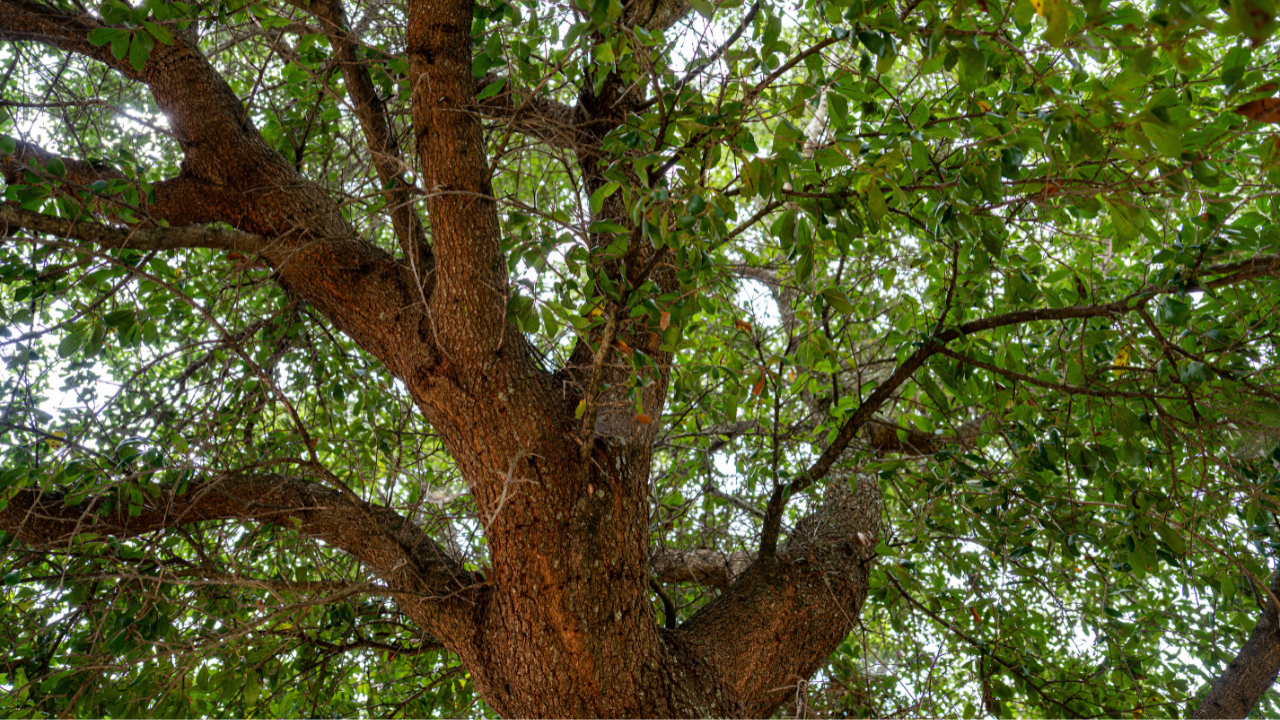content body

Les Goertzen is a professor of biological sciences and director of the John D. Freeman Herbarium.
On fall Saturdays, when the final whistle blows, all eyes turn to Toomer’s Corner. The rolling of the oaks is an Auburn tradition recognized around the country, but the story of these trees doesn’t end on game day.
Their future is also being safeguarded in Auburn’s Donald E. Davis Arboretum as well as in labs and classrooms at the College of Sciences and Mathematics, where researchers and students are using genomics to ensure the SEC’s most famous trees continue to thrive.
That work is part of a much bigger story. In Alabama and across the globe, oaks are more than symbols of celebration. They are ecological powerhouses, supporting hundreds of species of birds, insects and mammals.
“In North America, the number of animal species that they support in an ecosystem or food web is significantly higher than other kinds of trees,” said Leslie Goertzen, professor of biological sciences and director of the John D. Freeman Herbarium at the Auburn University Museum of Natural History. “From blue jays, turkeys and squirrels to caterpillars, and even gall wasps, oaks sustain life at many levels.”
Alabama is home to around 40 native oak species, including several unique and rare kinds. That diversity makes the state “ground zero for U.S. oaks,” Goertzen said, and a natural laboratory for research, teaching and conservation efforts.
Much of Goertzen’s research focuses on genomics, mapping the DNA of plants to better understand their diversity and resilience. Recently, he and Alex Harkess of HudsonAlpha Institute for Biotechnology assembled a team of Auburn graduate students and sequenced the genome of the Toomer’s Oak, creating a reference map that researchers everywhere can use.
The project was hands-on training for the students, who helped collect material, analyze the DNA and write the scientific article describing the project.
“Each and every student knew the significance of the Toomer’s Oaks,” Goertzen said. “It was a great way to get something positive from what had been a real loss for the Auburn Family.”
The completion of the genome project provides a fitting tribute to the beloved trees.
“The Toomer’s Oaks will forever be the representative of their species, the southern live oak, in the annals of science,” Goertzen said.
That model for student engagement has now spread well beyond Auburn. Harkess and Goertzen founded the American Campus Tree Genome project to help other universities do similar projects with their own iconic trees.

Patrick Thompson is the curator of the Donald E. Davis Arboretum.
Students at the University of Georgia have sequenced the famous hedges that ring Sanford Stadium. A University of Florida team has sequenced trees from the revered McCarty Woods, and this fall at Clemson University, students will begin work on the massive centennial oak at the heart of their campus.
“Every campus has a special tree,” Goertzen said. “We realized this was a way to engage students anywhere in an authentic research experience, connecting the latest genomics technology to traditions that really matter to them.”
At the Davis Arboretum, curator Patrick Thompson sees the same potential in Auburn’s nationally accredited oak collection. Through his work, the arboretum has grown into a hub for conservation, research and outreach. When the Association of Public Gardens of America launched its Plant Collections Network, Auburn stepped forward to represent the Southeast, the region with the greatest oak diversity in the country.
That commitment has led to groundbreaking work on the rare Alabama sandstone oak, a species found only on a narrow strip of ridges between Birmingham and Gadsden. Thompson and his team have tracked and measured every known wild tree, collected seeds and are developing a seed orchard in North Carolina to safeguard the species future.
The work is challenging. Sandstone oaks rarely produce acorns, with only about 4 percent of trees yielding more than 10 seeds in a year. Efforts to share baby Alabama sandstone oaks with other gardens often fail. Thompson likens their situation to that of the giant panda.
“There are roughly 1,800 in the wild for both species, but twice as many pandas in captivity,” he said.
The parallel helps explain why Auburn’s work with the sandstone oak has been adopted by the Global Consortium for the Conservation of Oaks as the “gold standard” of U.S. oak conservation.
Like Goertzen, Thompson emphasizes that conservation is not just about what happens on campus.
“Our oak collection is too big to contain in a garden,” he said. “It really lives across Alabama.”
Landowners play a key role, whether by granting access for seed collection, sharing observations through platforms like iNaturalist or simply caring for the oaks in their own yards.
For those who want to get involved, Thompson’s advice is simple: start by paying attention. Oaks are everywhere in Alabama, from towering white oaks to shrubby species that thrive on rocks and sand.
Visitors can bring an image, leaf or acorn to compare it to the 43 native oaks species displaced at the arboretum to identify which species they have in their yard. Community members can also email arbinfo@auburn.edu for guidance on species and how to contribute to conservation.
As Auburn gears up for another season of rolling the oaks, Goertzen and Thompson hope people also see the deeper story. The trees symbolize both tradition and innovation, rooted in history while guiding the future of conservation science.
“Alabama’s oak diversity is something to be proud of,” Thompson said. “We have an oak for every environment, from swamps to rocky ridges. Protecting them means protecting the ecosystems and the traditions that depend on them.”





